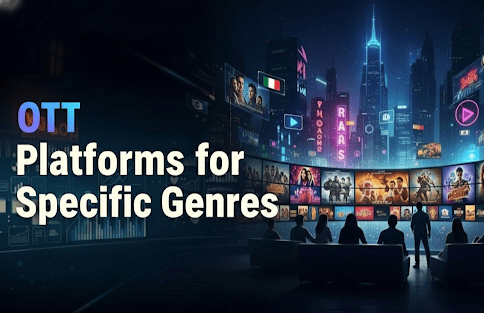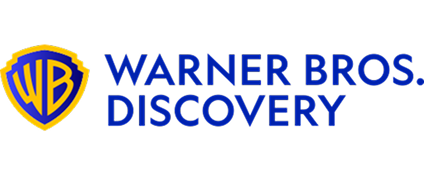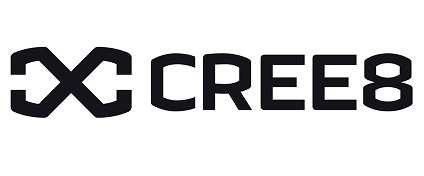OTT Platforms for Specific Genres: The Definitive Guide for M&E Executives

Introduction
The streaming landscape has undergone a fundamental shift: mass-market aggregation is ceding ground to precise, specific genres. For the modern Media & Entertainment (M&E) executive, this transition from generalist platforms to specialized, targeted offerings is the definitive strategic challenge of the decade.
The value proposition of an OTT service is no longer defined by the quantity of its library, but by the relevance and depth of its content within a specific vertical—be it horror, documentary, anime, or faith-based programming.
This focus on ott platforms for specific genres demands a completely new content acquisition playbook. Executives must abandon the inefficient volume-based licensing model and adopt a surgical, data-driven approach that prioritizes content authenticity and partner reputation.
Table of content
- The Rise of Niche OTT Platforms for Specific Genres: A Strategic Pivot
- The Acquisition Paradox: Securing Content for Niche OTT Platforms
- A Strategic Framework for Genre Content Acquisition
- Operationalizing the Targeted Content Strategy: Scouting and Verification
- How Vitrina Solves the Content Fragmentation Crisis for Genre OTT
- Conclusion: Mastering the Niche Content Vertical
- Frequently Asked Questions
Key Takeaways
| Core Challenge | The fragmented content supply chain makes it difficult for genre-focused platforms to efficiently discover, verify, and secure niche content and the specialized partners who create it. |
| Strategic Solution | Implementing a content intelligence platform that provides real-time tracking of emerging genre projects and delivers verifiable company and executive profiles for high-confidence dealmaking. |
| Vitrina’s Role | Providing the essential project, company, and executive data necessary to transform content scouting into a predictable, targeted, and profitable niche streaming strategy. |
The Rise of Niche OTT Platforms for Specific Genres: A Strategic Pivot
The proliferation of streaming services has created a saturated market where churn is the primary threat to profitability. The executive persona operating in this environment recognizes that survival depends on delivering a uniquely compelling proposition.
The emergence of ott platforms for specific genres—often referred to as specialized VODs—is a direct response to this economic pressure. These niche platforms thrive on two strategic advantages that generalist services cannot easily replicate: Audience Loyalty and Pricing Power.
Audience Loyalty as a Churn Reducer
Subscribers to a niche platform are often super-fans of a specific genre (e.g., horror fans subscribing to Shudder or martial arts enthusiasts subscribing to specialized fight platforms).
This inherent emotional connection translates directly into lower churn rates and higher customer lifetime value (LTV).A 2024 analysis highlighted by The Hollywood Reporter indicated that churn rates for top-tier specialized VODs were consistently 15-25% lower than those of major general entertainment platforms.
This stability allows M&E executives to forecast revenue and investment with greater confidence. However, maintaining this loyalty requires a relentless commitment to authentic, high-quality, and exclusive content that speaks directly to the genre’s specific audience language and tropes.
The Content Acquisition Strategy Challenge
The core differentiator for these ott platforms for specific genres is content depth. This means the acquisition teams face unique challenges:
- Fragmented Sourcing: The most authentic genre content often comes from small, independent production houses, specialized international distributors, or niche co-production partners, not the major Hollywood studios. Finding these small, high-value needles in the global haystack is inefficient and high-cost.
- Inaccurate Valuation: Standardized valuation models based on mass-market appeal fail when dealing with highly specific content (e.g., documentary films about obscure historical events). Executives require granular data on a content’s production quality, the track record of its key creative talent, and its success in limited releases or festivals to accurately perform genre content valuation.
- Unverified Partnerships: For niche co-productions, the executive must be certain of the partner’s track record, reputation, and financial stability. Without a centralized resource for due diligence on these smaller, often international entities, the risk of “difficulty finding international distribution partners for niche or regional genres” remains high.
The Acquisition Paradox: Securing Content for Niche OTT Platforms
The path to building a dominant ott platforms for specific genres library is fraught with contradictions. To achieve scale, you must master exclusivity. To achieve exclusivity, you must find content that no one else has discovered. This is the genre acquisition paradox, and it manifests in two critical areas: partner discovery and content valuation.
The Partner Discovery Problem
Traditional content scouting relies heavily on attending major markets (MIPCOM, AFM, etc.). While necessary, this approach is inherently reactive; you are competing for projects that are already on the market and available to everyone.
For a successful niche streaming strategy, the acquisition team needs to move upstream to the development and pre-production stages. This requires:
- Mapping the Ecosystem: Identifying and monitoring the output of production companies and financiers that specialize only in the target genre. For a platform focused on animated content, for example, the strategic priority shifts from a general distributor list to a hyper-specific list of animation co-production studios and specialized VFX houses globally.
- Executive Intelligence: Knowing who the decision-makers are at these boutique studios, and tracking their movements and new projects. Relying on outdated or public-facing contact lists results in wasted time and resources, directly impacting the profitability of the acquisition team.
Content Valuation and the Risk of Speculation
When licensing for specific genres, the executive cannot rely on generic box office or overall viewing hour metrics. The negotiation must be supported by verifiable metadata that proves a title’s authenticity and production quality.
- Production Quality Verification: The valuation process must include verifiable data on the production budget (or budget range), the confirmed crew/cast, and the post-production vendors used. Using a VFX studio with an elite track record in the genre, for instance, adds verifiable value to the content asset.
- Collaborator Due Diligence: The financial and creative risk of a deal is intrinsically tied to the track record of the counterparty. An executive must be able to instantly check the deal history, ownership structure, and verified professional reputation of any production company or sales agent globally before committing capital. A lack of this visibility is a common pain point: “Incomplete visibility into comp…”.
A Strategic Framework for Genre Content Acquisition
I recommend a three-pronged strategic framework that transforms the search for content from a disorganized process into a predictable, data-backed content acquisition strategy.
1. Build a Vertical Content Map
The first step is to definitively map the content supply chain for your specific genre.
- Micro-Niche Segmentation: Move beyond broad categories. A platform targeting “Crime” should segment into “Nordic Noir,” “True Crime Documentary,” and “Heist Thriller Series.” Each segment has a different set of global producers, financiers, and writers.
- Track Creative DNA: Focus intelligence gathering on the people and companies who have successfully delivered content in those micro-niches. This moves the acquisition search from searching for a title to searching for the creators who are currently working on a new title.
2. Prioritize Early-Stage Intelligence
Securing exclusivity or favorable licensing terms is only possible by engaging with projects early.
- The Development Advantage: Use project tracking tools to monitor genre projects in the development-pre-production stages. This allows for initial outreach to offer co-financing, distribution, or pre-buy deals before the project is fully packaged and presented to major global buyers. This directly solves the executive’s pain point of needing “early warning on upcoming film/TV projects.”
- Verified Contact Outreach: Once a potential project is identified, outreach must be directed at the confirmed executive decision-maker (e.g., the VP of Acquisitions, not a general sales manager). Wasted outreach is wasted budget. Find the verified contact for any company in the genre vertical here.
3. Monetization Through Precision Licensing
The ultimate goal of a niche streaming strategy is a superior ROI.
- Value the Long Tail: For genre platforms, the long-tail library content is often more valuable than it is for general platforms because it fuels deeper engagement for the core audience. Ensure licensing agreements for this content are multi-year and scalable.
- Focus on Global Rights Precision: For international content, ensure the platform’s ability to localize (dub, subtitle) the content is explicitly supported by the license terms. The success of ott platforms for specific genres often depends on their ability to source content globally and distribute it to a highly specific, but worldwide, audience.
Operationalizing the Targeted Content Strategy: Scouting and Verification
Operationalizing a targeted content strategy requires moving the acquisition team’s workflow onto a single source of verifiable data.
Action 1: Systematically Filter for Niche Expertise
The greatest obstacle in niche acquisition is the noise from generalist providers. Your technology platform must act as an aggressive filter.
- Filter by Verified Specialization: Use advanced search to filter the entire global supply chain by verified production history in a specific genre, rather than relying on self-declared company descriptions. If you are a documentary platform, your search must only return companies with a track record of producing or financing documentaries that have premiered at specific, tier-one festivals.
- Cross-Reference Company and Project Data: Do not evaluate a project in isolation. Every potential content deal must be viewed through the lens of the company (track record) and the executive (past successes) driving it. This combined perspective mitigates the risk associated with smaller, less-known partners.
Action 2: Integrate Scouting into Dealmaking
The information gathered during scouting must be instantly actionable within the M&E executive’s workflow.
- CRM-Ready Intelligence: The content intelligence platform must offer API and CRM integration (HubSpot, Salesforce) to seamlessly pull verified executive contact details and project metadata into the internal deal pipeline. This dramatically cuts down on the manual, error-prone data entry that costs time and slows deal velocity.
- Due Diligence as a First Step: Before any negotiation begins, the due diligence on the partner—using verifiable data on their legal status, recent financing rounds, and specific team members—should be the first stage of the acquisition process, not an afterthought.
Action 3: Measure Niche-Specific ROI
The success metrics for ott platforms for specific genres differ. Traditional ARPU is important, but content must be tied to genre-specific engagement metrics.
- Content-to-Churn Correlation: Measure which specific licensed genre titles have the highest correlation with subscriber retention in that vertical. This data should inform future acquisition spending, prioritizing titles that are proven “stickers” for the core audience over those that simply draw a temporary audience spike. You can learn more about how to refine your acquisition metrics here.
How Vitrina Solves the Content Fragmentation Crisis for Genre OTT
Vitrina is purpose-built to eliminate the data fragmentation that plagues ott platforms for specific genres. We function as the definitive source of verifiable intelligence for content acquisition, partnership, and deal execution. Our platform delivers a strategic advantage by providing the precise data that generalist tools miss.
Vitrina’s platform directly addresses the core operational gaps identified by niche content executives:
- Project Early Warning System for Genres: Our Film & TV Project Tracker monitors over 1.4 million projects globally, allowing executives to filter for specific genres and project stages (e.g., “Horror” in “Development” in the “UK”). This capability provides the 6-18 month lead time necessary to secure pre-buy and co-production deals ahead of the mass market.
- Verified Specialty Vendor Mapping: We profile over 100,000 M&E companies, including specialized post-production houses, localization vendors, and boutique distributors, all tagged by their verified vertical expertise. This means a niche platform can find the top-rated anime studio in Japan or the best sci-fi VFX house in Europe with algorithmic certainty.
- Executive-Level Contact Verification: Our database contains over 3 million verified executives, including CXOs and Heads of Acquisition, with contact details. This ensures that every outreach related to a genre content valuation or licensing deal is directed to the person with decision-making power.
Vitrina is not a generalized search engine; it is a search engine for the business of entertainment, providing the verified, granular data needed to confidently execute a highly focused niche streaming strategy.
Conclusion: Mastering the Niche Content Vertical
The content war is shifting from a land grab of subscribers to a meticulous cultivation of highly engaged niche communities.
For M&E executives, succeeding with ott platforms for specific genres is a function of discipline: focusing capital on authentic content, verifying the track record of every potential partner, and using data to secure favorable deals in the early stages of a project’s life.
The era of blind negotiation is over. By embracing a strategic framework powered by verifiable intelligence, content leaders can confidently secure the deep, high-quality genre libraries necessary to achieve market dominance and predictable, long-term ROI.
Frequently Asked Questions
The main risks include over-specialization, which limits the total addressable market (TAM), and the difficulty in securing a high volume of quality content necessary to maintain subscriber engagement. High-cost churn caused by the expiration of key licenses is also a significant threat.
Success requires proactive scouting of international production markets and early engagement with specialized co-production partners and financiers. Utilizing a platform that verifies the production track record of these international partners is essential for effective cross-border distribution and deal execution.
AI and specialized data tools are used to normalize fragmented data sets and track granular performance metrics (e.g., festival selections, key creative talent) to assist in objective content valuation. This provides executives with the objective truth needed to negotiate licensing fees for content where audience data is scarce.
A generalist platform (like Netflix) aims for broad demographic appeal and library volume across many genres. A niche platform focuses on one specific vertical (e.g., documentary, horror, anime) to achieve content depth and high subscriber loyalty within a highly specific, engaged audience segment.















































